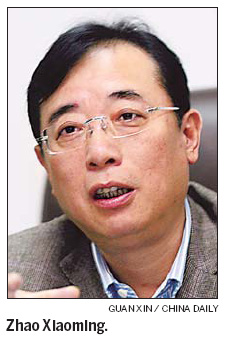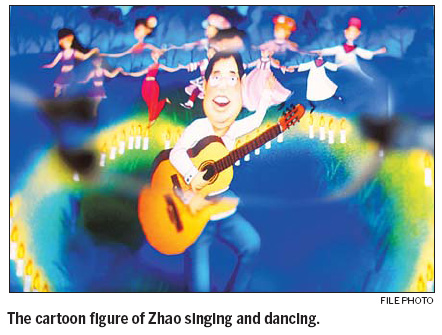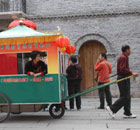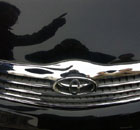Hot on the Web
Headlines bring in tourists, says mayor
By ZHAO HUANXIN and FENG ZHIWEI (China Daily)
Updated: 2010-03-10 08:00
 |
Large Medium Small |

BEIJING: Zhao Xiaoming, the mayor of Zhangjiajie, a city in the northwestern part of Hunan province, is of the belief that to grab tourists, you must first grab headlines.
"In tourism marketing, 70 percent of your success depends on publicity, and 30 percent on scenic resources and virtues," Zhao told China Daily.
Zhao, 54, became the publicity stuntman for the UNESCO World Heritage site after he presented himself as a cartoon figure singing and dancing to the tune of John Denver's hit track Take me home, country roads last year, and inviting the world's top tightrope walkers to compete in a contest in Zhangjiajie's iconic Tianmen Mountain later this month.
Zhao, a deputy to the National People's Congress, is in Beijing to attend the annual legislative meeting this week.
He said endorsing his city was perhaps the best thing for him to do for the benefit of his people.
Tourism is a pillar industry in Zhangjiajie, which is home to 1.6 million people. Last year, the city attracted nearly 20 million tourists, making it one of the most visited places in China.
"I am more than happy doing all the promotional stunts," said Zhao. He became the first incumbent mayor in the country to use his personal caricature in a video clip to promote a public event - an international country music festival.
Globally, the video clip has generated 220 million hits on the website so far, according to sources with the Zhangjiajie city government.
"It (the video) is a huge success and it has convinced me that cunning media hype, especially on new media, can make a stormy sea stormier, and play a unique role in tourism marketing," he said.
Most recently, local people added a poster to identify the Southern Sky Column, a craggy peak in Zhangjiajie, as the floating "Hallelujah" mountain depicted in the Hollywood blockbuster Avatar.
Zhao said his city had enough evidence to show that many of the background scenes in Avatar were based on the real pictures of Zhangjiajie.
He maintained the city government did not participate in the renaming of the peak, saying it was purely an action by local people. "It was a smart hype to capitalize on that fame to bring in more travelers," he said.
The city arranged for the Russian aerobatic team "Russian Knights" to launch a spectacular air show in Zhangjiajie in March 2006, fueling a heated debate whether the Russian SU-7 fighter jet would perform a stunt that involved flying through the Tianmen Hole, a hole cut in the Tianmen Mountain 132 meters above the ground.
"The fly-through plan was finally cancelled, but the debate drew worldwide attention, bringing in more and more foreign visitors," Zhao said.
Another promotional event has been designed for the popular mountain on March 20, he said. This time, Swiss tightrope walker Freddy Nock, a world record holder, will compete with Saimaiti Aijiang, a high-wire artist from China's Xinjiang Uygur autonomous region.
It is an event that will catch the attention of the world again, he said.
Although marketing schemes are important to Zhangjiajie or to any tourist site, they must be supported by consistent efforts to preserve and augment the site's charm and service quality, Zhao said.
Zhangjiajie boasts one of the few areas in China with the purest air and most unique landscape that eerily resemble traditional Chinese paintings.
Built on its resources and current advantages in attracting tourists, Zhangjiajie is improving infrastructure to shift from a city where people come only for sightseeing, to one where people come for leisure, business conventions and health rehabilitation, in addition to sightseeing, he said.
Zhangjiajie was discovered as a scenic attraction about 30 years ago by Chinese painter Wu Guanzhong, who wrote that the city was like an achingly beautiful maid "not known to anyone, being raised in deep boudoir".
Wulingyuan, Zhangjiajie's major scenic area, was listed on the World Heritage List by UNESCO in 1992, and in 2004, declared one of the world's GeoParks.
To introduce the city, Zhao quoted a paragraph from a 2007 New York Times story by American journalist Simon Winchester: "In terms of astonishment I found myself saying time and again, as I gaped from cliff-edge and bridge and viewing tower: This is as great as the Great Wall. And all the while I had to remind myself that Wulingyuan had been made by nature for China, and though it looks in places almost too perfect and carefully hewn to be true, not made, like the wall, by politically motivated man."













